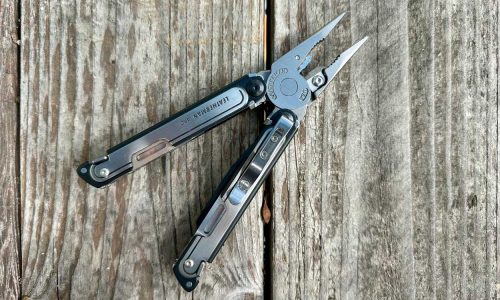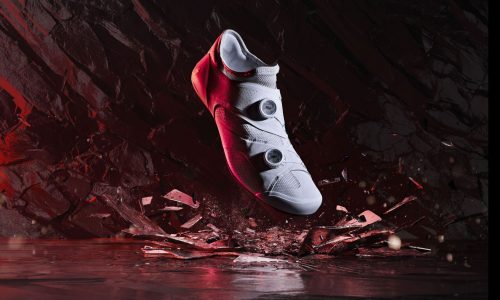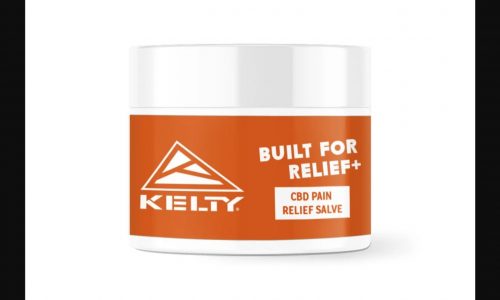See part one of this column here
Without fail—no matter how diligent you are—a well-used blade will eventually need to be re-sharpened. I have knives that have needed sharpening a week after I began to use them, and I have machete’s that I am baffled that they still don’t need to be honed. But how can you tell when your tool needs to spend some time on the sharpening stone?
Knives, Razors, and Machetes
My grandfather left behind all sorts of notes on how to run his machines and keep his workshop and shed in working order. Along with those notes were specific notes on prolonging the life of his tools. One note that I read early on was how to determine if your knife was sharp. His approach had two paths for me to follow.
The first had me run the edge of the blade across my thumbnail to see if it would catch. If it did, then I still had a decent edge on the blade. If the blade slid across your thumb nail then it was time to hit the sharpening stone.
The second option had me try to slide the blade down the edge of a piece of paper. If I could easily slice the paper, my adventure had come to an end. But if you ended up bending and beating the paper up, then it was back to the stones.
I still use these methods some twenty years later. I generally pick the thumbnail method for Swiss Army Knife or Leatherman blades, but I opt for the paper test when determining if I need to sharpen my EDC pocket knife; knowing that this particular blade would be used for more intensive tasks.
NOTE: both of these methods are also great to turn to during the process of sharpening to let you know when you can stop rubbing that stone.
Axes and Hatchets
For tools that don’t require that much of an edge to be effective, Axes and Hatchets can be a little more of a challenge to determine when it’s time to re-sharpen them. I’ve relied on some simple observations to determine when a bit needs to be sharpened and a basic method when I’m in the process of sharpening either a hatchet or an axe.
Regarding observations to determine that these suckers need to be sharpened—the most basic of them is bounce. If you try to split a log or chop down a tree and the Axe or hatchet bounce back at you—it’s a telltale sign that you need to sharpen it up. Another observation would be to see what the bark or bare wood look like after a strike. A sharp bit on an Axe or Hatchet will slice into wood where a dull bit will cut and smash into the wood.
My method for determining when I can stop sharpening the bit is a glorified “paper slicing” routine where I swap out the paper for a piece of wood. A sharp bit will be able to slice a layer of wood off of a larger piece cleanly. You could also try and shave the hair off of your arm to see if the bit is nice and sharp, but if you’ve got dark hair, you may end up looking like a weirdo after a few tries.
The Technique
How someone goes about sharpening these tools is a lot of opinion and a little bit of technique. I say this tongue-in-cheek for, as I said before, everyone seems to have the right idea when it comes to sharpening any of the aforementioned tools—because in all reality, all of these processes will require technique, which comes with practice. Believe me, I’ve destroyed some great blades in my time—but at this point, I think I’ve got it down to a science—and that was through trial and error.
The best way to sharpen anything with an edge is to make sure you follow the angle in which the blade or bit was originally sharpened. I can tell you this for certain, most of my knives are at 15-20 degrees, but I would need to measure each one of my hatchets, axes, or mauls to be certain. Knowing this will save you time and energy, and ultimately prolong the life of your tool. Yes, you can change angle of the blade or bit edge—fairly easily actually—but this could have dire ramifications right down to the molecular level. So, if you listen to any of my rambles—make sure you determine the angle of that edge.
Additionally, once you start working at sharpening your tools—it’s important to maintain this angle, and a cadence. Symmetry plays heavy on the effectiveness of a blade or bit, it is possible to over-sharpen one side or sharpen the other side at a different angle. You could end up with a better edge then what you started with, but its lifespan has been compromised and you’ll be hitting the stones sooner than later.
The Preferred Tools
I’d like to start off by saying that I am not endorsed by Lansky, or by anyone for that matter. I have just found that a couple of the products that Lansky has put out have really made a lasting impact in my life and as long as they continue to make them—I will keep buying them. With that being said:
Anytime you sharpen an edged-tool it’s going to be with some form of stone and oil / water combination; if you want to do it right. Granularity and lubrication will always provide the cleanest, longest lasting edge, and generally speaking it’s not going to be with just one stone. Yes, you can sharpen a knife using a singular stone, especially if you’re just doing a light touch-up session, but if you want a long lasting edge, you need to go through a series of stones—going from coarse to fine—and make sure you’re using a little drop of oil for each side.
For the past five years, I have relied on the Lansky Deluxe 5-Stone System to get my sharpening done and I have found that it not only provides a one stop shop of stone finishes, but it also has a knife holding apparatus that allows you to set and sharpen at the required edge angle, without fail. It still takes time and patience to do the job. But the end result is always precise; and I don’t knick up the blade.
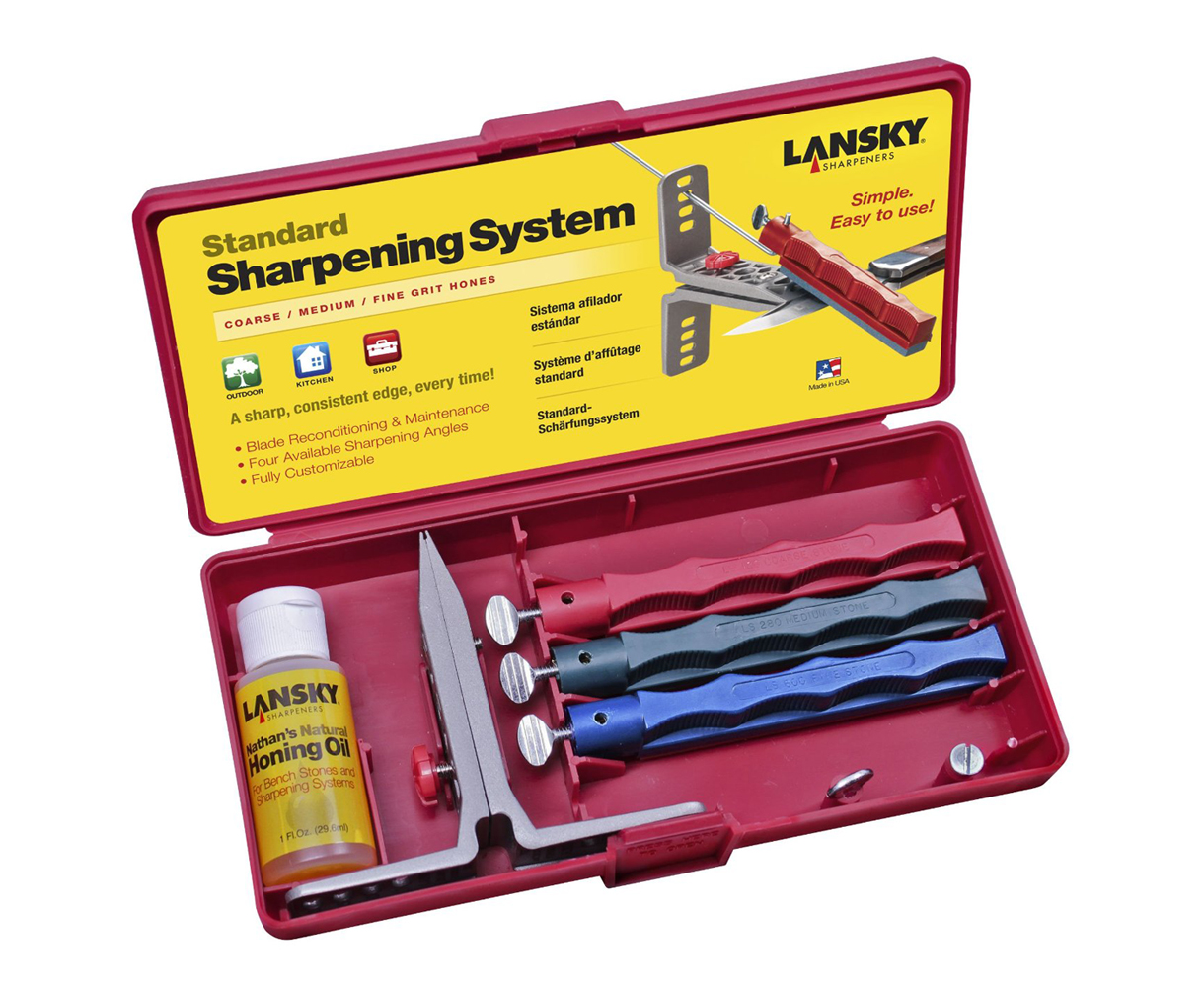
In regards to axes and hatchets, Lansky has the answer as well with their Lansky Puck. This dual-grain, ultra-portable element allows you to sharpen your bits in the shop, on the trail, or out by the wood pile and it’s made from some sort of alien grit that I can’t defeat.

What about serrations, Mr. Viking?
Sigh. This is one of the reasons I don’t recommend serrations unless you really need them—because those bastards require a lot of time, patience, and specific tools to re-sharpen AND they need to be sharpened more than your blade edge will need to be. Regularly I wouldn’t recommend diamond or tungsten sharpening tools to anyone but a professional, as they can scar up a blade something awful with little effort—but in the case of serrations you need a round file or sharpening rod (some of which are ceramic and very precise). Lansky offers this in a simple solution with their Blademedic Knife Sharpener. This portable pocket tool will do the job for sharpening your whole knife, including your serrations.
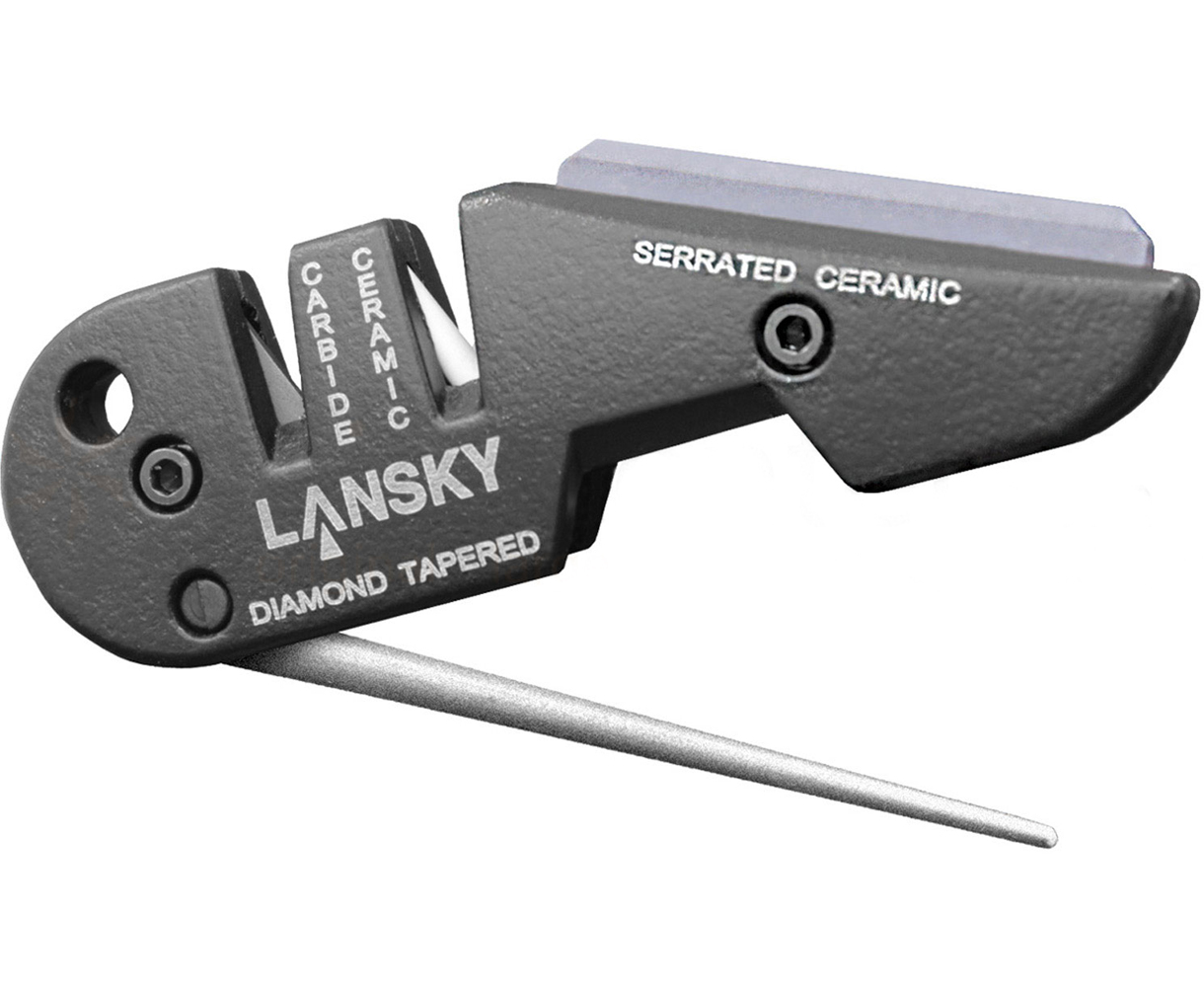
And if I’m on the trail?
When you’re out and about on the trail, you’re not looking to hone the perfect edge; you’re looking to get by and get through the situation you’re in that clued you in that your knife was dull (because none of you would ever hit the trail with a dull knife). I would call upon the Lansky Blademedic, again, or a simple Diamond Pocket Stone . With a diamond stone, you use water instead of oil which makes things even more convenient, and you can get a great edge with a little time and patience. Just mind your angle and keep a cadence.
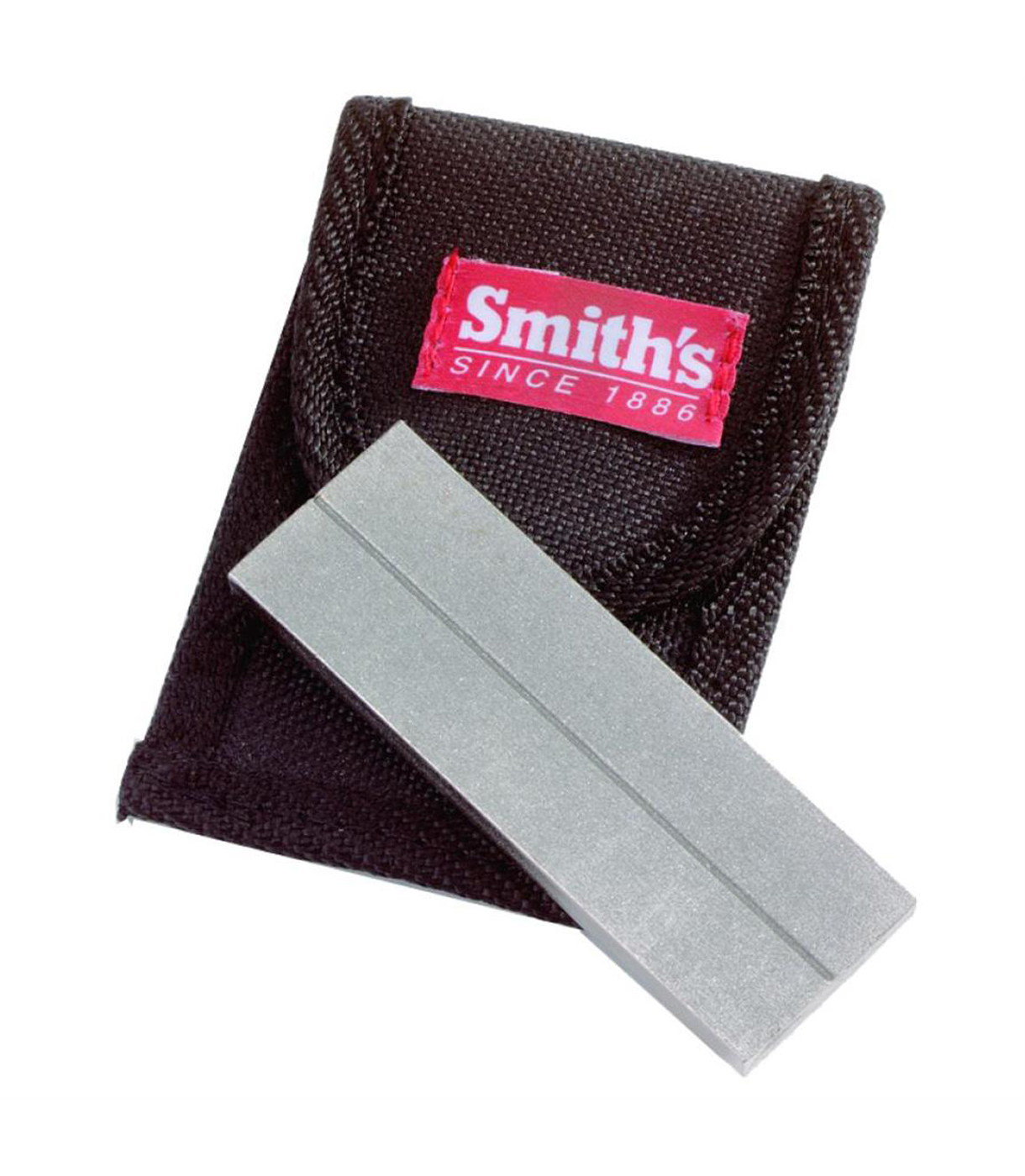
In Closing
Alright kids, my apologies on the length of this write-up which I can only assume my editors have tried to get me to trim down and I have put up a valiant fight—but this is the important stuff that pertains to everything I do here for them and, ultimately, for you—so I hope you’re reading this article in it’s unabridged form, though possibly in two parts.
I’ve picked these tools based on my experiences and needs. I don’t think any of the aforementioned tools are adequate for sharpening kitchen cutlery—no no, for that it’s a few different full-sized sharpening stones, honing oil, beer, and a good movie on TV (I prefer early Tarantino or Disney Movies). You may rely on a razor strop for everything in your edged-tool catalog and find everything I just said a general kick to the knee. The important message here is to make sure you’re using a proven method that works for you that doesn’t involve you dragging your blades on the sidewalk and thinking you’re going to get the right results. Like anything, there is a lot of crap on the market and there are a lot of people suggesting cruddy methods while using that crap. I don’t want you to go through that because you’ll only feel the effects of those choices when you NEED your edged-tool of choice.
With that being said, and as I have said, I use Lansky products because they are tried and true and have always held up to my abuse. There are other great products out there—some offered by the manufacturer you bought your bladed-buddy from. I actually have a stone made by Buck in the early 1990’s that I use quite a bit. Additionally, I didn’t get into blade and bit materials here, but certain metals and finishes could require specific tools. It’s always important to read up on any included, relative documentation, or talk with folks at the manufacturer if you think you’ve got some super special edged-tool on your hand. In the very least, look at the recommended accessories for that product as it will usually flush out the right tools for the job.









